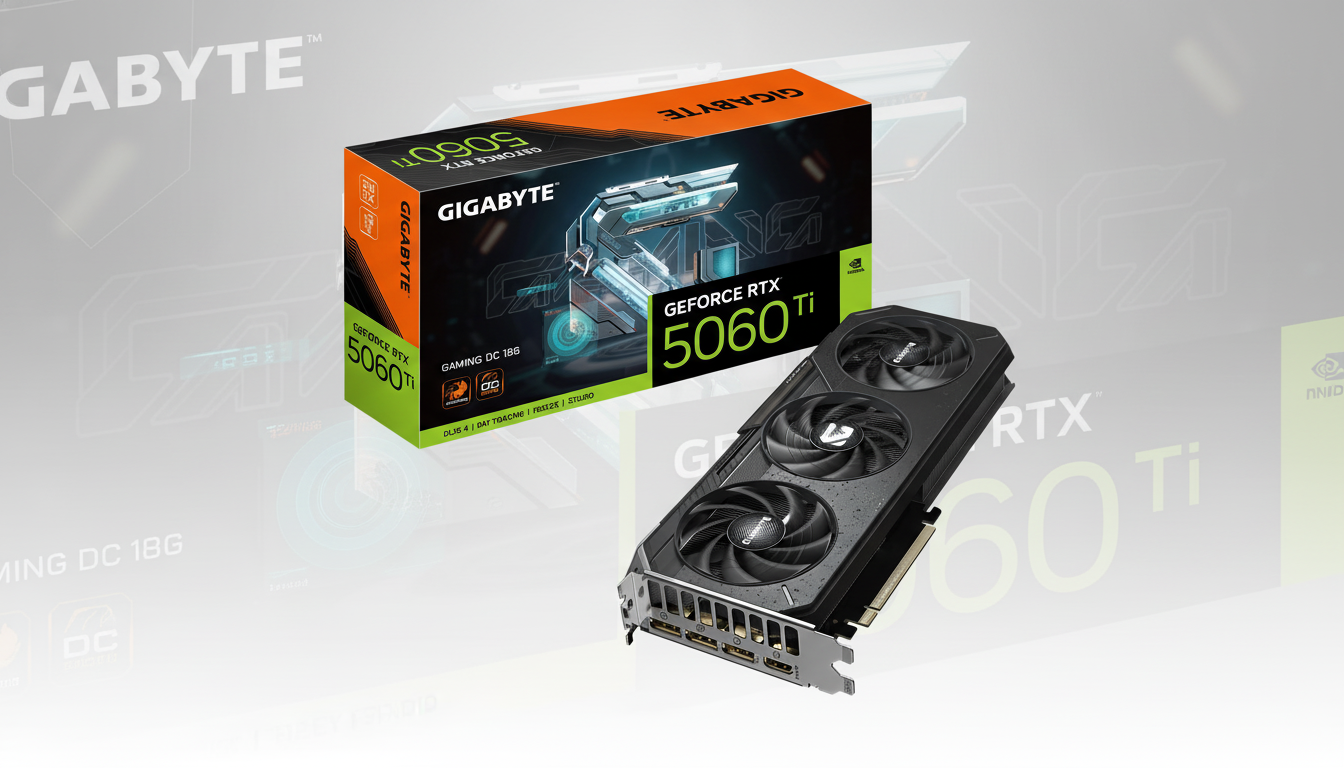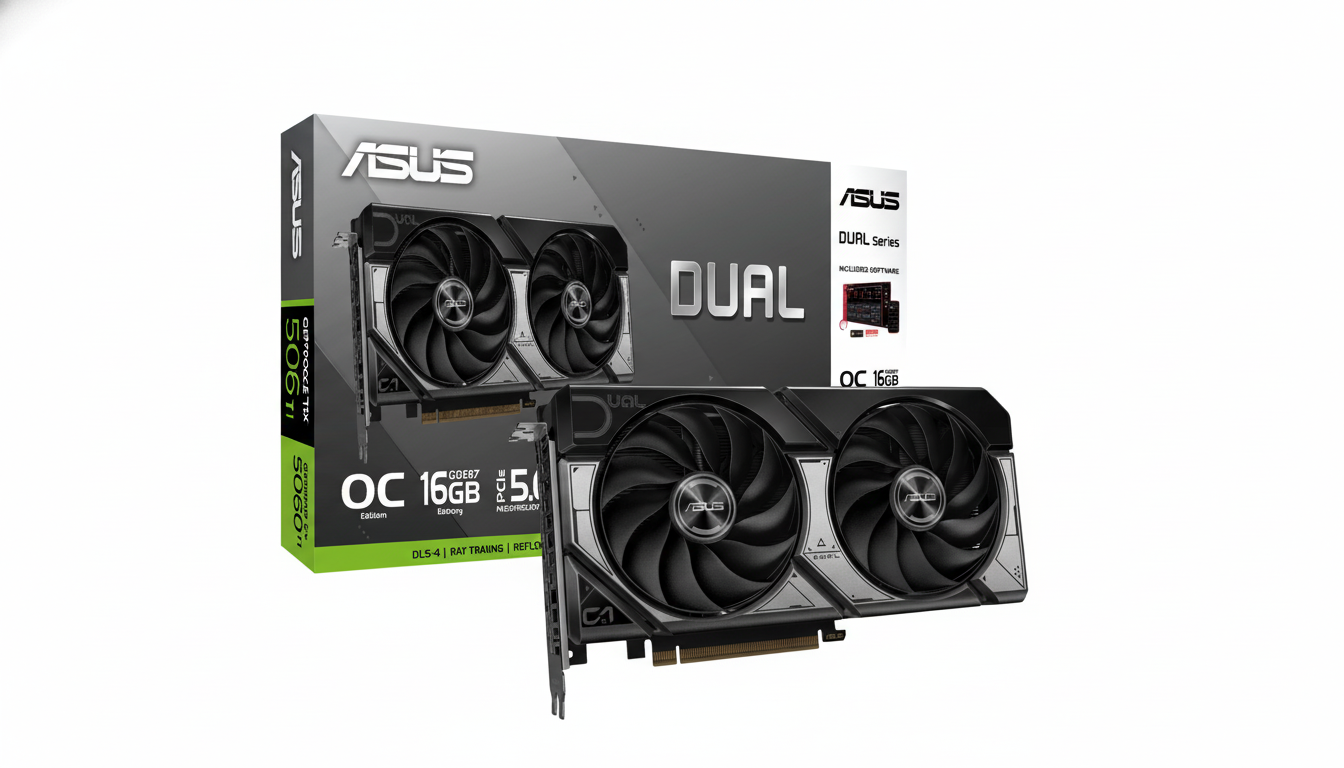Add-in-board partners are being instructed by Nvidia to push 16GB GeForce RTX 5060 Ti models while cracking down on supplies and pricing for the cut-down 8GB versions, reports circulating on BoardChannels make clear — with a wrap-up from TechPowerUp. The move reflects the industry’s previous rumblings, as major players in the mainstream have been venting frustration at 8GB of VRAM being a potential bottleneck for modern PC gaming.
Why Nvidia Is Pushing Partners Down to 16GB
VRAM quantity has moved to the front line for midrange GPUs. Newer titles come with bigger texture sets, etc., higher geometric complexity, and more burdensome ray tracing in comparison. When a card exhausts its VRAM, it spills assets into system memory, hammering 1% lows and frame pacing—effects that the average FPS just doesn’t measure. With the 16GB emphasis, Nvidia wants to make the RTX 5060 Ti the “default” choice for 1080p play and competent-at-1440p gaming with modern settings, especially ray tracing (hot right now) and high-res texture packs.

This realignment also collapses the stack. Dual-capacity SKUs clog store shelves and confound consumers. Focusing partner SKUs on 16GB specs reduces friction while not steering users into the wrong memory configuration or GPU class.
Performance and Player Opinions on 8GB GPUs
Independent testing over this past GPU cycle has often showcased how 8GB cards trip when memory pressure increases. TechSpot, GamersNexus, and Digital Foundry have all reported situations in games like The Last of Us Part I, Hogwarts Legacy, and Cyberpunk 2077 where bursting past such limits at high settings on an 8GB configuration led to noticeable drops in 1% lows or texture pop-ins when compared with their memory-raised 12GB–16GB counterparts—cases that could see drops of 20–40% during memory-intensive conditions.
That experience has reshaped expectations. “Weak sell-through” for 8GB mid-range retail channel checks has been cited by BoardChannels, and enthusiast forum and social platform sentiment is said to be treating 8GB as “entry-only.” According to those reports, Nvidia’s own analysis found that this perception is now impacting where shoppers choose to lay down their money across the price spectrum, not simply among those cruising for very high-end hardware.
Inventory and Pricing Controls That Drove the Shift
Its reported new policy has two elements: capping fresh allocations of 8GB RTX 5060 Ti units and tightening pricing controls on those models. In practice, it should push store shelves further toward the 16GB default and stabilize them there without confusing value comparisons with flash sales.
For board manufacturers, the economics are doable. The bill-of-materials delta between 8GB and 16GB—mostly extra GDDR memory—usually hits the tens of dollars, depending on memory type and market pricing. Consequently, using a single, higher-capacity SKU can garner OpEx savings in validation, packaging, and channel logistics that partially offset the extra memory cost.

Game Demands and the Wider Competitive Context
Game requirements have climbed quickly. Texture packs and RT features can fill 8GB at 1080p with high-quality presets in games such as Alan Wake II, Starfield, and Resident Evil 4. Even before ray tracing, open-world games with aggressive streaming pipelines press VRAM to expedite stutter-free traversal. Things like DLSS Frame Generation or Ray Reconstruction don’t eliminate memory pressure; they add their own overheads, so headroom has value.
Competitors have already piled on larger buffers. AMD’s mainstream lineup also touts several 12GB and 16GB SKUs — chief among them the RX 7800 XT (16GB) — which appeals to buyers who are leery of 8GB ceilings. Jon Peddie Research analysts have also observed a wider move to higher-memory configurations in AIB shipments, which has occurred in the midrange “sweet spot” where longevity is most important.
What to Watch From Board Partners and Releases
You should expect Asus, MSI, Gigabyte, and other AIBs to grow 16GB RTX 5060 Ti inventories with differentiated coolers, memory speeds, and power limits — and for the pace of new 8GB releases to slow.
We’d also expect 16GB units to become more of the bundle/promotion sweethearts due to supply skews.
For buyers, the guidance is simple: target 16GB if you want solid 1% lows and better textures/fewer compromises in RT-heavy games throughout the life of your card. In addition to capacity, pay attention to thermal design and acoustics, as well as the warranty — those are what separate a great 16GB RTX 5060 Ti from merely adequate.
Nvidia’s course correction is an admission of where mainstream PC gaming has landed. If the company solidifies 16GB as the midrange baseline for the RTX 5060 Ti, it could be more than just an end-game goal for 8GB in the midrange and provide a much clearer, future-proof value equation for gamers.

